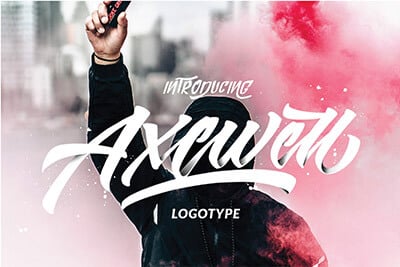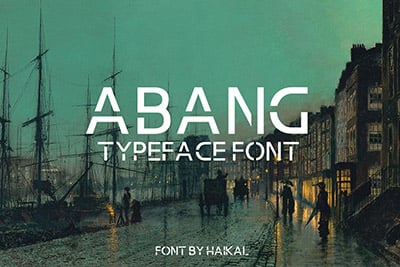What Is Leading in Typography? + Tips & Examples
In the world of typography, ‘leading’ (pronounced as ‘ledding’) is a term that often surfaces, especially in discussions about readability and design aesthetics.
Originating from the days of manual typesetting, leading remains a fundamental aspect of modern typography. It impacts how text is perceived and can dramatically influence the readability and overall look of a printed page or digital screen.
In this comprehensive guide, we delve into the concept of leading, its significance, and how to effectively apply it in your typographic work.
2 Million+ Fonts, Typefaces, and Design Resources With Unlimited Downloads
Download thousands of stunning premium fonts and typefaces with an Envato Elements membership. It starts at $16 per month, and gives you unlimited access to a growing library of over 2,000,000 fonts, design templates, themes, photos, and more.
What Is Leading?

Leading refers to the vertical space between lines of text. Historically, it was achieved by physically adding strips of lead between lines of type in typesetting.
In digital typography, leading is created through software, adjusting the space between lines to improve legibility and aesthetic appeal.
Leading is more than just a technical aspect of typography; it’s an art that balances form and function. It plays a significant role in readability, mood, and the overall effectiveness of the text.
Understanding and mastering leading can elevate your typographic projects, whether they are in print or digital form. By considering factors like font size, text length, and the medium of your content, and applying the tips outlined in this guide, you can skillfully use leading to enhance your typographic creations.
Measuring Leading
Leading is typically measured in points (pt) and is determined by the distance from the baseline of one line of text to the baseline of the line above it. For example, if the font size is 12pt and the leading is set to 14pt, there’s a 2pt space between the lines in addition to the font’s size.
Importance of Leading in Typography
Enhancing Readability
The primary function of leading is to enhance readability. Adequate spacing prevents lines from appearing too cramped or too spread out, ensuring that the reader can easily follow the text.
Aesthetic Considerations
Beyond readability, leading plays a crucial role in the overall visual presentation of text. It affects the text’s density on the page and can be used to create a specific mood or style.
Factors Influencing Leading Decisions
Type Size and Font Style
Larger type sizes generally require more leading. Similarly, font styles with pronounced features, like extended serifs, may need increased leading to prevent visual clutter.
Length of the Text
Longer passages, such as in books or articles, often benefit from increased leading to avoid eye strain over extended reading periods.
Context and Medium
The context in which the text is presented – whether in a novel, a webpage, or an advertisement – and the medium used, also influence the optimal amount of leading.
Examples of Leading in Action
1. Print Media

In print, leading is crucial for the legibility of long texts, like in books and newspapers. It must be balanced to avoid tiring the reader’s eyes.
Newspapers often use tight leading to fit more content. However, they balance it with clear, legible fonts and organized column structures.
2. Digital Media
For digital screens, considerations like screen resolution and size come into play. Websites and e-books might require different leading compared to print.
Websites often experiment with leading to enhance user experience and readability, especially for long-form content.
3. Advertising and Branding

In advertising, leading can be manipulated to create impact. Tight leading can make a bold statement, while generous leading can convey luxury and sophistication.
4. Luxury Branding

Luxury brands tend to use generous leading in their promotional materials, creating a sense of elegance and exclusivity.
Tips for Effective Use of Leading
1. Start with Standard Leading
A good rule of thumb is to begin with leading which is 120%-130% of your font size. This is often a safe starting point for many types of text. For example, for a 10pt font, start with 12-13pt leading. Adjust from there based on specific needs.
2. Adjust Leading Based on Line Length
The length of your text lines significantly affects readability. Longer lines (like in a widescreen format) might benefit from increased leading, helping the eye move more comfortably from one line to the next.
3. Tailor Leading to Audience and Purpose
Different types of text and audiences require different approaches. For example, academic or professional documents might demand more conservative leading, while creative or promotional materials could experiment with more or less spacing.
4. Test on Multiple Devices for Digital Typography
If your text will be read on screens, test how your leading appears on various devices. This ensures consistency and readability across different screen sizes and resolutions.
5. Balance Leading with Paragraph Spacing
Leading should work in harmony with the spacing between paragraphs. Too much space between lines combined with large paragraph spacing can fragment the text, while too little can make it look cramped.
6. Consider the Impact of Font Type
Different fonts behave differently when it comes to leading. For example, a font with tall x-heights or extended ascenders and descenders might require more leading to prevent visual crowding.
7. Use Leading to Create Rhythm and Emphasis
Leading can influence the rhythm of your text. Tight leading can speed up the reading pace, making the text feel more dynamic, while generous leading can slow it down, giving it a more deliberate, luxurious feel.
8. Be Mindful of Alignment and Justification
The alignment and justification of your text can be affected by leading. For instance, justified text might require careful adjustment of leading to prevent irregular spacing between words and lines.
9. Experiment with Leading for Visual Hierarchy
Varying the leading in different text elements (like headlines, subheadings, and body text) can help establish a clear visual hierarchy, guiding the reader’s eye through the content.
10. Pay Attention to Context and Color
The background color or texture can impact the perception of leading. Dark text on a light background might need less leading compared to light text on a dark background, due to the way contrast affects legibility.
11. Consider the Overall Page Layout
Leading doesn’t exist in isolation; it’s part of the overall page design. Consider how your leading choices fit within the broader layout, including margins, columns, and other graphical elements.
12. Keep Accessibility in Mind
Accessible design is crucial, especially for digital content. Ensure your leading choices don’t hinder readability for people with visual impairments or reading difficulties.
13. Continuously Evaluate and Adjust
Typography is not a set-and-forget task. Continuously evaluate the effectiveness of your leading as your design progresses. Adjust as necessary based on the evolving design and content.
14. Learn from Established Standards
Study well-designed books, websites, and other typographic works. Notice how they use leading and try to understand the rationale behind their choices. This can provide valuable insights for your own work.
15. Don’t Be Afraid to Break the Rules
Once you’re comfortable with the standard practices, don’t be afraid to experiment. Sometimes breaking the rules can lead to innovative, attention-grabbing designs.
Conclusion
Leading, often overlooked, is a crucial component of this visual communication. It’s an element that, when used effectively, can make a substantial difference in the impact and comprehension of your typographic work.
As you explore the world of typography, keep leading in mind as a key tool in your design arsenal, one that can greatly influence the success of your communication efforts. Remember, typography is not just about what the text says, but also about how it visually communicates with the reader.






